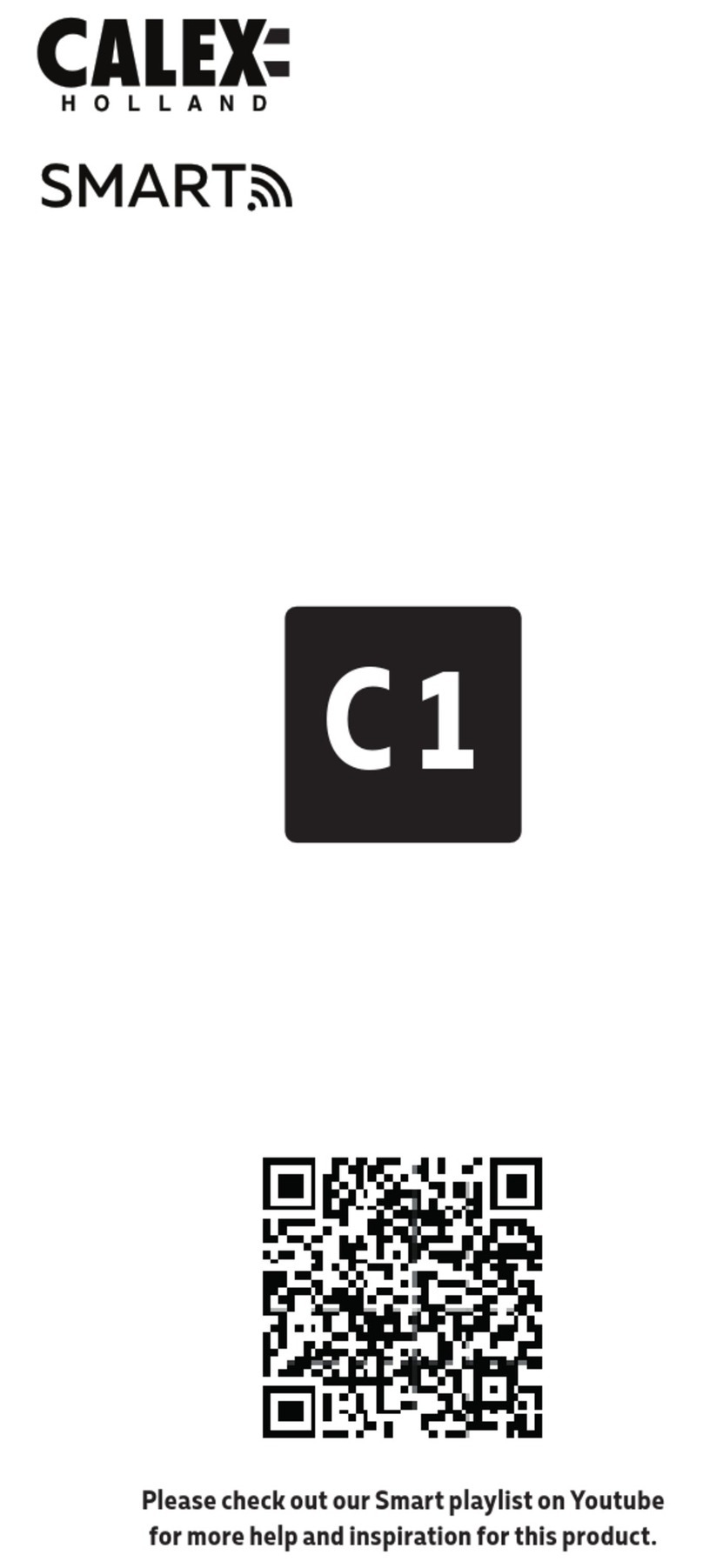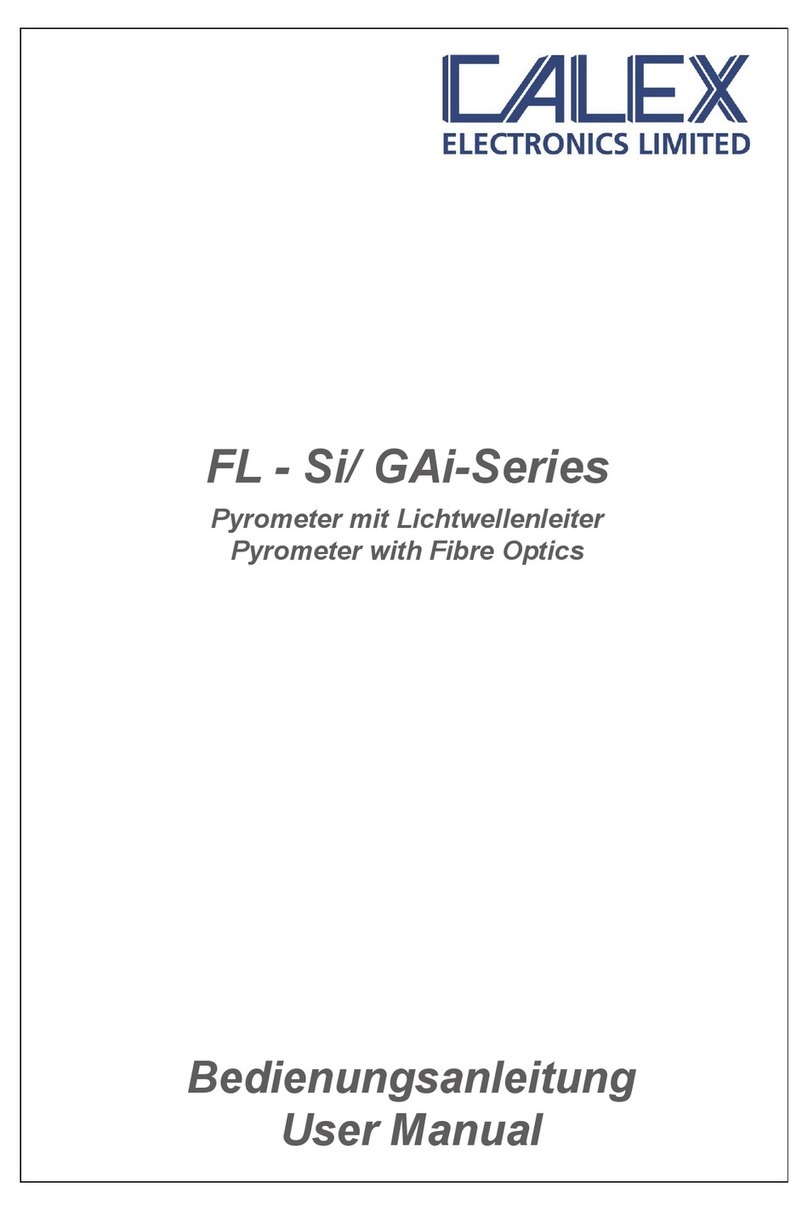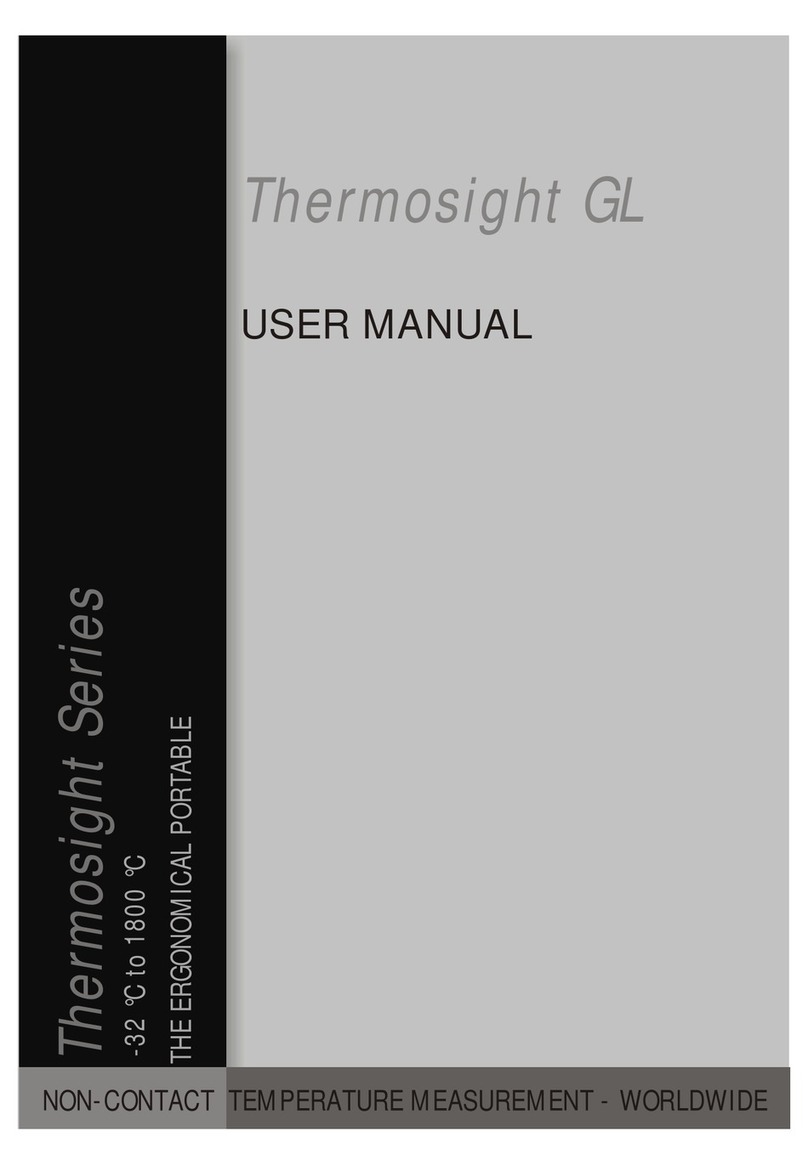
8
›
Les détecteurs infra-rouge sans contact PyroEpsilon mesurent des températures entre -20°C
et 500°C, et fournissent une sortie linéaire de 4 jusqu’à 20mA. Ce signal de sortie est compatible
avec pratiquement tous les indicateurs, régulateurs, enregistreurs, enregistreurs de données,
etc., et n’exige aucune interface spécifique ni prétraitement de signaux spécial.
L’émissivité du détecteur peut être réglée entre 0,2 et 1,0 afin de prendre en compte des
matériaux cibles différents, et elle est commandée par une entrée 4-20 mA. Ce dispositif offre
la possibilité de régler l’émissivité automatiquement à partir d’un automate programmable
(PLC). L’émissivité peut également être réglée de façon manuelle à l’aide du module PyroTune
en option. Si l’entrée 4-20 mA est laissée ouverte, ou s’il y a un court-circuit, l’émissivité se règle
par défaut sur 0,95.
SPÉCIFICATIONS - PYROEPSILON
Tableau montrant la gamme de températures vs le champ de vision
Champ de Visée -20ºC à 100ºC 0ºC à 250ºC 0ºC à 500ºC
2:1 PE21LT PE21MT PE21HT
15:1 PE151LT PE151MT PE151HT
30:1 PE301LT PE301MT PE301HT
ø5mm @ 100mm PECFLT PECFMT PECFHT
Sortie 4 à 20mA
Précision ± 1% de la mesure ou ± 1°C, celui qui est le plus important
Fidélité ± 0,5% de la mesure ou ± 0,5°C, celui qui est le plus important
Emissivité 0,2 à 1,0
Temps de réponse 240ms (réponse 90%)
Réponse spectrale 8 à 14µm
Voltage d’alimentation 24V cc (max. 28V cc)
Voltage du détecteur Min. 6V cc
Impédance en boucle maximale 900 Ohms (4-20mA sortie)
Impédance d’entrée 50 Ω
MÉCANIQUES
Construction Acier inoxydable
Dimensions 18mm diamètre x 103mm
Longueur du câble 1m
Poids avec câble 95g
ENVIRONNEMENTALES
Catégorie environnementale IP65
Echelle de température ambiante 0°C à 70°C
Humidité relative Maximum 95% non condensée
SPÉCIFICATIONS - PYROTUNE
Sortie 4 à 20mA
Voltage d’alimentation 24 V cc (13V à 28V cc)
Format d’achage LCD, 3,5 chires
Unités d’achage Emissivité (0,2 à 1,0) ou courant (4 - 20 mA)
Réglage Boutons poussoirs (augmenter / réduire / xer)
MÉCANIQUES
Construction Polycarbonate avec joint statique, couvercle transparent
(PC) et vis à déserrage rapide
Support Surface
Dimensions 65 mm x 50 mm x 35 mm
Poids 72 g
ENVIRONMENTAL
Catégorie environnementale IP65
Echelle de température ambiante 0°C à 70°C
Humidité relative Maximum 95% non condensée
français
Ihr Schweizer Industriepartner






























